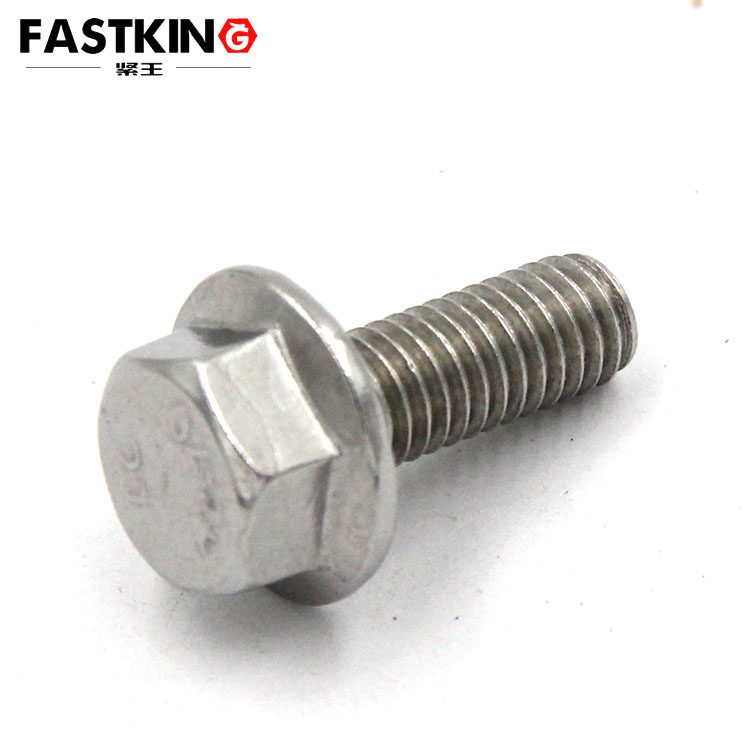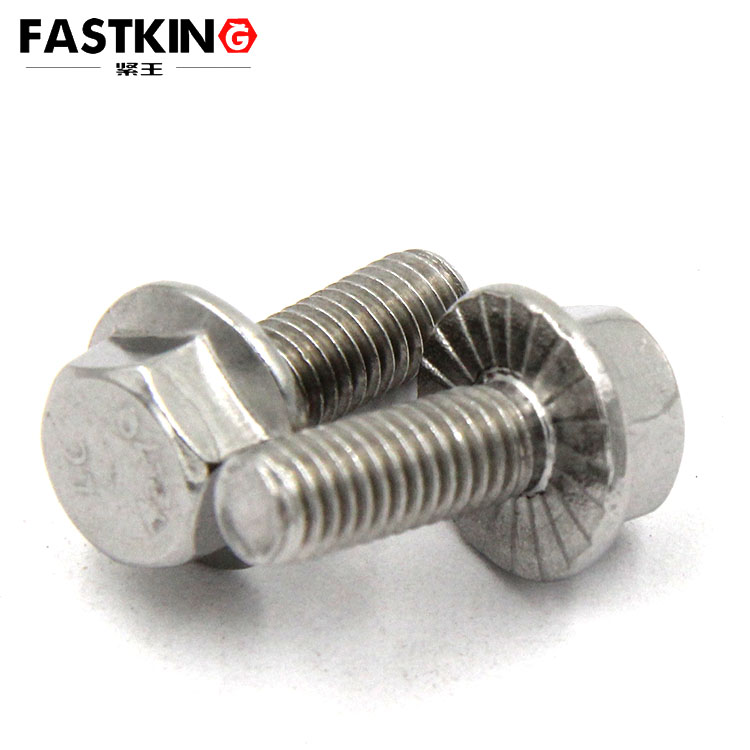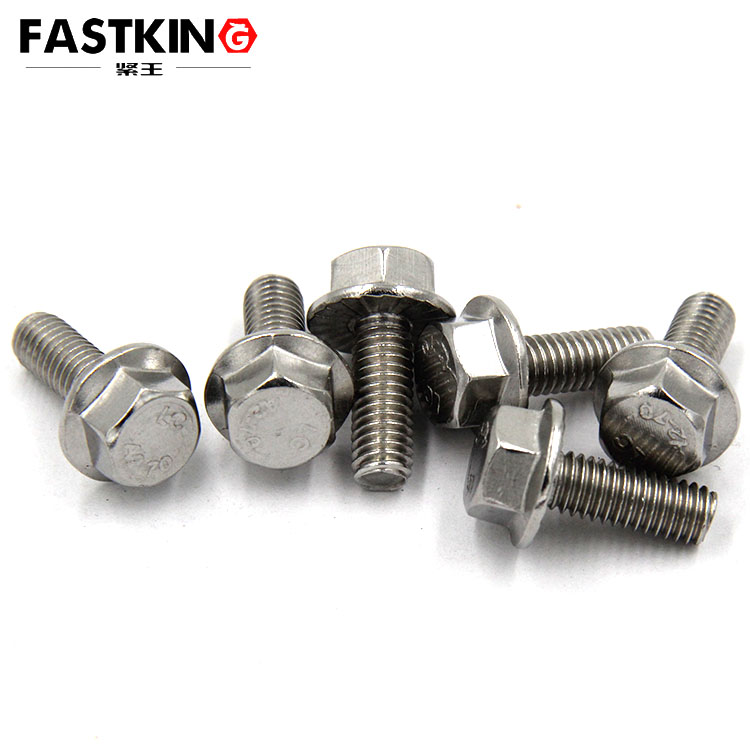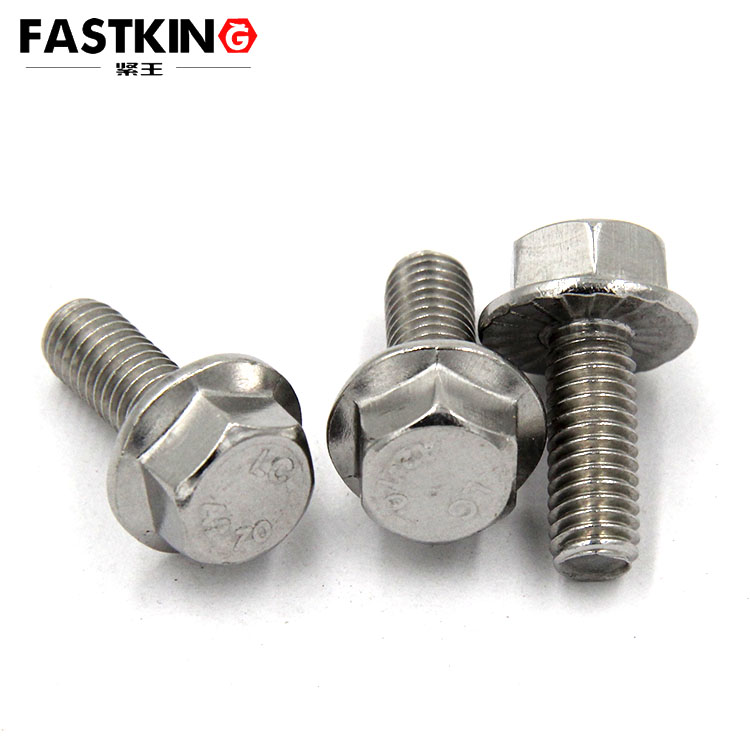

The core advantages of hexagon flange bolts stem from their exquisite structural design. In terms of appearance, they consist of three parts: the external hexagonal head, the flange disk, and the screw rod, each undertaking a specific functional mission.
The external hexagonal head adopts a hexagonal structure. Compared with socket hexagonal heads or other special-shaped heads, its greatest advantage lies in strong adaptability — ordinary open-end wrenches and box-end wrenches can be used for installation and disassembly without the need for special tools, which greatly improves assembly efficiency. This advantage is particularly prominent in scenarios lacking professional equipment, such as field maintenance and emergency repairs. At the same time, the symmetrical structure of the hexagon can evenly distribute torque, avoiding head deformation or slipping caused by uneven force during installation and ensuring operational safety.
The flange disk is the core component that distinguishes hexagon flange bolts from ordinary hexagon bolts, and it is also the key to their "anti-loosening and anti-slip" capability. Located at the junction of the bolt head and the screw rod, the flange disk is in the shape of an annular protrusion, and anti-slip serrations or coatings are usually designed on the lower side of the disk surface. The role of this structure is mainly reflected in two aspects:
First, it increases the contact area, dispersing the pressure generated when the bolt is tightened to a larger surface of the workpiece, thereby preventing the workpiece surface from denting or being damaged due to excessive local pressure. This is especially suitable for connecting materials with low hardness, such as aluminum alloys and plastics.
Second, the anti-slip serrations can form a mechanical engagement with the workpiece surface. Combined with the friction force of the flange disk itself, it effectively resists the loosening risk caused by dynamic loads such as vibration and impact. In the connection of high-frequency vibration components such as automobile engines and gearboxes, ordinary bolts are prone to loosening due to vibration. However, hexagon flange bolts can maintain a stable tightened state for a long time relying on the anti-slip design of the flange disk, reducing the probability of equipment failure.
From the perspective of performance parameters, the "high strength" characteristic of hexagon flange bolts is the foundation for their position in the industrial field. According to different materials, they can be divided into carbon steel bolts (e.g., grade 4.8, 8.8, 10.9, 12.9), stainless steel bolts (e.g., 304, 316 materials), and special alloy bolts (e.g., titanium alloy, high-temperature alloy). Among them, high-strength carbon steel bolts of grade 8.8 and above, after quenching and tempering heat treatment (quenching + tempering), have a tensile strength of more than 800MPa and a yield strength of over 640MPa. They can withstand huge tensile loads and shear loads, meeting the strict requirements for connection strength in heavy machinery, large steel structures, and other fields. Stainless steel hexagon flange bolts, on the other hand, possess excellent corrosion resistance. They can effectively resist rust in humid and corrosive environments such as marine engineering and chemical equipment, extending the service life of the equipment.
In practical application scenarios, hexagon flange bolts achieve a perfect balance between "versatility" and "professionalism". In the field of automobile manufacturing, they are widely used in key parts such as the chassis suspension system, wheel hubs, and engine brackets. The chassis suspension needs to bear the impact load when the vehicle is driving, and the anti-slip design of the flange disk can prevent suspension failure caused by bolt loosening. The connection of wheel hubs requires bolts to have both high strength and anti-loosening performance, and the structure of hexagon flange bolts just meets this demand. In the field of engineering machinery, high-strength hexagon flange bolts can resist severe vibration and heavy loads during mechanical operation in the connection of hydraulic cylinders and crawler frames of excavators and cranes, ensuring the stable operation of the equipment. In addition, in the field of precision manufacturing such as medical equipment and communication equipment, small-sized hexagon flange bolts (e.g., M3, M4 models) have become the ideal choice for connecting small parts due to their precise dimensional accuracy and stable tightening performance.
However, to give full play to the performance of hexagon flange bolts, correct installation and maintenance are crucial. During installation, it is necessary to select the appropriate torque according to the bolt specifications and workpiece material. Excessively small torque will lead to insufficient tightening force and easy loosening, while excessively large torque may cause tensile deformation and fracture of the bolt or damage the workpiece thread. At the same time, before installation, impurities and oil stains in the bolt and the workpiece thread hole should be cleaned to prevent impurities from affecting the thread fit accuracy and reducing the tightening force. During the maintenance process, it is necessary to regularly check the tightening state of the bolts, especially in equipment with frequent vibration and large load changes. If bolt loosening is found, it should be re-tightened in a timely manner according to the specified torque. For bolts that are in a corrosive environment for a long time, their rust condition should be checked regularly, and new bolts should be replaced if necessary to prevent safety accidents caused by reduced bolt strength due to rust.
With the development of industrial manufacturing towards "high precision, high reliability, and intelligence", hexagon flange bolts are also constantly upgrading and iterating. On the one hand, manufacturers improve the dimensional accuracy and surface quality of bolts by optimizing production processes (e.g., cold heading forming, thread rolling), reducing thread processing errors and improving assembly fit. On the other hand, the application of new coating technologies (e.g., Dacromet coating, zinc-nickel alloy coating) further enhances the corrosion resistance and friction stability of bolts, enabling them to adapt to harsher working environments. In addition, to meet the demand for intelligent assembly, some enterprises have also developed "smart bolts" with torque monitoring function. By integrating sensors inside the bolts, they can feed back the tightening torque and bolt stress status in real time, providing data support for equipment maintenance and promoting the development of industrial connection towards the intelligent direction of "visualization and early warning".
As a "basic component" of industrial connection, although hexagon flange bolts seem small, they bear the important mission of ensuring the safe and stable operation of equipment. Their structural design embodies the combination of "pragmatism" and "engineering wisdom", and their performance parameters meet the professional needs of different industries. Their application scenarios cover a wide range from heavy industry to precision manufacturing. In the future, with the continuous integration of new materials, new processes, and new technologies, hexagon flange bolts will continue to evolve, providing more reliable connection guarantees for the high-quality development of industrial manufacturing.



